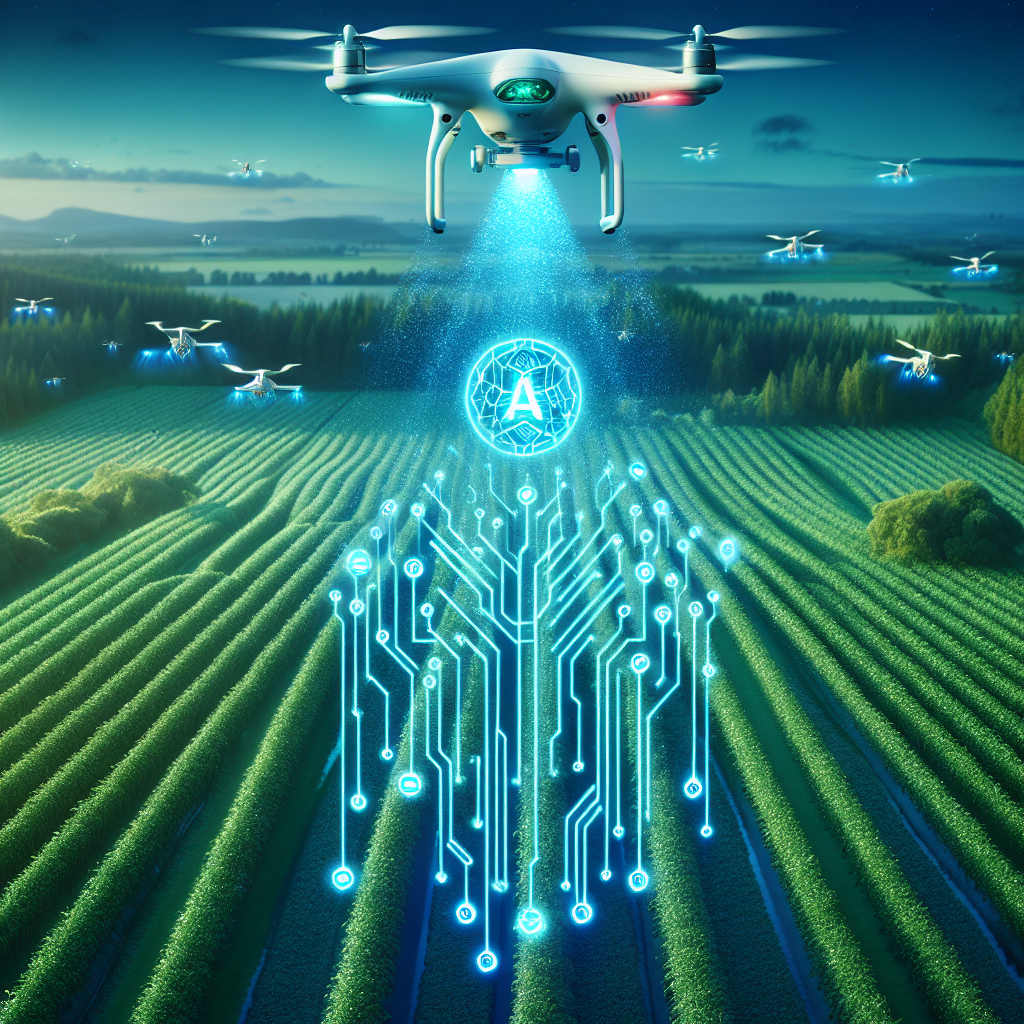In recent years, the combination of artificial intelligence (AI) and drones has revolutionized the way we approach precision agriculture. By harnessing the power of AI algorithms and unmanned aerial vehicles (UAVs), farmers are able to gather detailed, real-time data about their crops and make more informed decisions to optimize yields and minimize waste. This winning combination has the potential to transform the agricultural industry, making it more efficient, sustainable, and productive than ever before.
AI technology has made significant advancements in recent years, allowing for the development of sophisticated algorithms that can analyze large amounts of data with incredible speed and accuracy. When paired with drones, these AI algorithms can process data collected from the air to provide farmers with valuable insights into the health and condition of their crops. Drones equipped with high-resolution cameras and sensors can capture detailed images of fields, which can then be analyzed by AI software to identify areas of stress, disease, or nutrient deficiency. This information can help farmers to take targeted actions, such as adjusting irrigation levels or applying fertilizers, to address these issues before they impact crop yields.
One of the key advantages of using drones in agriculture is their ability to cover large areas of land quickly and efficiently. Traditional methods of crop monitoring, such as walking the fields or using manned aircraft, are time-consuming and labor-intensive. Drones, on the other hand, can fly over fields autonomously, capturing high-quality data in a fraction of the time. This allows farmers to monitor their crops more frequently and make timely decisions based on up-to-date information.
In addition to monitoring crop health, drones can also be used for a variety of other tasks in precision agriculture. For example, drones equipped with multispectral cameras can capture data beyond the visible spectrum, providing insights into plant health that would not be visible to the naked eye. Drones can also be used to create detailed 3D maps of fields, which can help farmers to identify areas of uneven terrain or water pooling that may affect crop growth. By using drones for these tasks, farmers can gain a more comprehensive understanding of their fields and make more informed decisions to optimize their operations.
AI algorithms play a crucial role in making sense of the data collected by drones. These algorithms can analyze images and sensor data to detect patterns and anomalies that may indicate issues with crop health. For example, AI software can identify areas of discoloration in crop images that may be caused by disease or pest infestations. By flagging these areas for further inspection, farmers can take proactive measures to address the problem before it spreads throughout the entire field.
Another benefit of using AI and drones in agriculture is the ability to track crop growth and monitor yield predictions throughout the growing season. By collecting data at regular intervals, farmers can track the progress of their crops and make adjustments to their management practices as needed. This real-time monitoring can help farmers to optimize inputs such as water, fertilizers, and pesticides, leading to higher yields and better quality crops.
Overall, the combination of AI and drones in precision agriculture offers a range of benefits for farmers, including increased efficiency, improved decision-making, and higher yields. By harnessing the power of these technologies, farmers can stay ahead of challenges such as climate change, pests, and disease, and ensure the long-term sustainability of their operations.
FAQs:
Q: How much does it cost to implement AI and drones in precision agriculture?
A: The cost of implementing AI and drones in precision agriculture can vary depending on the size of the operation and the specific technologies used. In general, the cost of drones equipped with cameras and sensors can range from a few hundred to several thousand dollars, while AI software may require a subscription or licensing fee. However, the potential benefits of using these technologies, such as increased yields and reduced input costs, can outweigh the initial investment.
Q: Are there any regulatory concerns with using drones in agriculture?
A: Yes, there are regulations that govern the use of drones in agriculture, including restrictions on flying near airports, over populated areas, and above certain altitudes. Farmers may also need to obtain a license or certification to operate drones commercially. It’s important to familiarize yourself with the regulations in your area and ensure that you comply with all requirements before using drones in agriculture.
Q: Can drones be used for spraying pesticides or fertilizers?
A: Yes, drones can be equipped with spraying systems to apply pesticides, fertilizers, or other inputs to crops. This can be a more efficient and targeted method of application compared to traditional ground-based methods. However, it’s important to follow best practices for pesticide and fertilizer use to minimize environmental impact and ensure the safety of workers and consumers.
Q: How can I learn more about using AI and drones in precision agriculture?
A: There are a variety of resources available to help farmers learn more about using AI and drones in precision agriculture. This may include online courses, workshops, webinars, and industry conferences that focus on agricultural technology. Additionally, many agricultural equipment suppliers and technology companies offer training and support for farmers interested in implementing these technologies on their farms.

